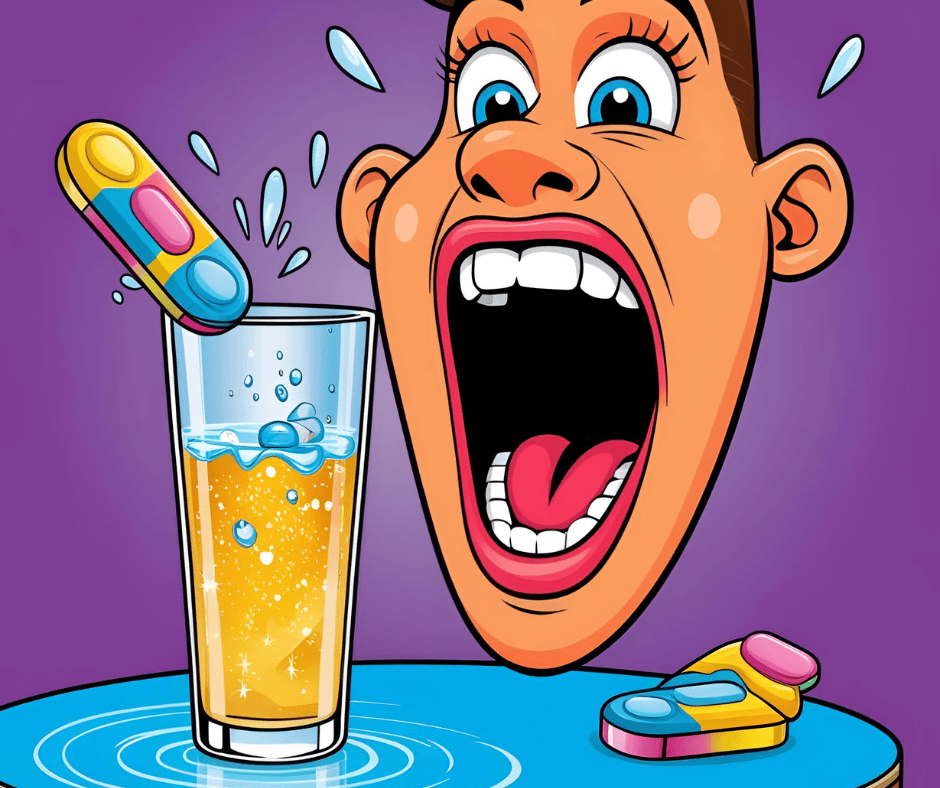We are a professional review company that receives compensation from companies whose products we review. We test each product thoroughly and give high marks only to the ones that are the very best. We are independently owned, and the opinions expressed here are our own.
Imagine this: you’re on a promising first date. The conversation flows, laughter abounds, and you lean in for that anticipated first kiss as the evening winds down. But you’re met with hesitation instead of a romantic moment, perhaps even a subtle recoil. Could bad breath be the unspoken culprit?
Bad breath, or halitosis, is more than an occasional inconvenience; it can be a significant barrier in social and romantic interactions. While many attribute it to our foods, the reality is more complex and rooted deep within our oral ecosystem.

Unmasking the Real Causes of Bad Breath
While certain foods like garlic and onions can temporarily taint our breath, persistent halitosis often stems from less obvious sources. The primary culprits are volatile sulfur compounds (VSCs) produced by specific bacteria in the mouth. These compounds, including hydrogen sulfide and methyl mercaptan, emit odors reminiscent of rotten eggs or decaying matter.
Research indicates that these VSCs are primarily produced by anaerobic bacteria residing on the tongue’s surface and in periodontal pockets. When these bacteria break down proteins from food debris, dead cells, or saliva, they release these malodorous compounds.

The Oral Microbiome: A Delicate Balance
Our mouths are home to a diverse community of microorganisms collectively known as the oral microbiome. This ecosystem is crucial in maintaining oral health, aiding digestion, and protecting against pathogenic invaders.
However, disruptions to this balance, termed dysbiosis, can lead to an overgrowth of harmful bacteria responsible for producing VSCs. Factors contributing to this imbalance include:
- Poor Oral Hygiene: Infrequent brushing and flossing allow food particles to linger, fueling bacteria.
- Dry Mouth: Saliva helps cleanse the mouth; reduced flow can lead to bacterial overgrowth.
- Smoking: Tobacco products dry out the mouth and introduce harmful chemicals that disrupt microbial balance.
- Diet: High sugar intake can promote the growth of detrimental bacteria.

Scientific Insights: The Microbial Players
Several bacterial species have been identified as significant contributors to halitosis:
- Porphyromonas gingivalis: Associated with periodontal disease and known for producing VSCs.
- Fusobacterium nucleatum: Plays a role in biofilm formation and emits foul-smelling compounds.
- Solobacterium moorei: Specifically linked to halitosis and found predominantly on the tongue’s surface.
Understanding these microbial players underscores the importance of targeting them in halitosis management strategies.
Want KISS-READY Confidence? 💋
Grab our free, science-backed guide and discover 7 natural steps to fresher breath and healthier gums starting today.
Probiotics: A Natural Remedy
Emerging research suggests that introducing beneficial bacteria, or probiotics, into the oral cavity can help restore microbial balance and combat bad breath. Strains like Streptococcus salivarius have shown promise in reducing VSC levels and inhibiting the growth of harmful bacteria.
Incorporating probiotics can be achieved through:
- Probiotic Lozenges: Designed to dissolve in the mouth, releasing beneficial bacteria directly.
- Fermented Foods: Yogurt, kefir, and miso can introduce helpful microbes.
- Oral Care Products: Some toothpastes and mouthwashes now include probiotic formulations.

Practical Steps to Freshen Your Breath
- Maintain Rigorous Oral Hygiene by brushing twice daily, flossing regularly, and considering using a tongue scraper to remove bacterial buildup.
- Stay Hydrated: Drinking water stimulates saliva production, aiding in cleansing the mouth.
- Limit Sugary Foods: Reducing sugar intake can prevent the proliferation of harmful bacteria.
- Avoid Tobacco Products: Smoking causes dry mouth and introduces toxins that disrupt the oral microbiome.
- Regular Dental Check-ups: Professional cleanings can remove tartar and detect potential issues early.
Bad breath can be more than a minor inconvenience; it can impact self-confidence and interpersonal relationships. We can combat halitosis effectively by understanding the underlying causes rooted in our oral microbiome and taking proactive steps, including incorporating probiotics.

Watch the short video below to learn more about natural remedies and to discover a simple daily ritual that supports fresh breath and oral health.
Note: This article is for informational purposes only and does not substitute professional medical advice. If you have concerns about oral health, always consult a dental professional. The link above is an affiliate link. If you purchase the featured product, you may assume that the article’s author receives a commission, but at no extra cost.




What do you think about the article you've just read? Please tell me below.